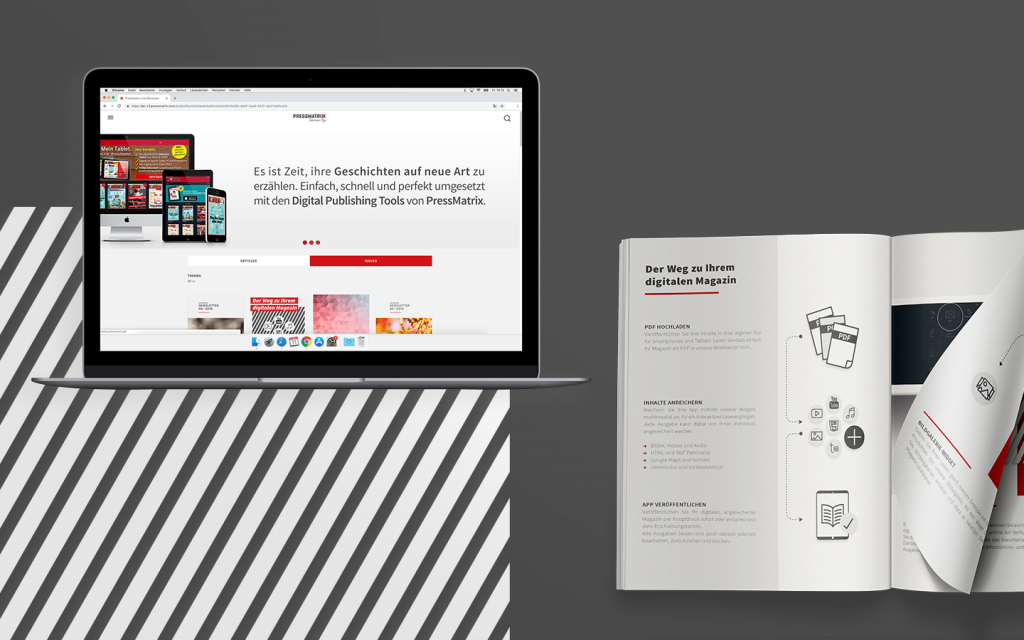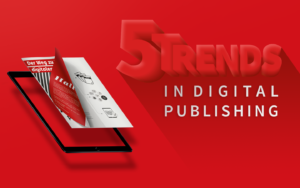Teil II: Digital-content goals and the metrics to measure them. A customer analysis.
In part one, we presented the motives and considerations of our customers that first led to them implementing a digital publishing solution. Now we look at the possible objectives of a digital solution and the metrics to measure their success.
What goals do customers pursue with their digital content?
Publishing clients are concerned with stabilizing or balancing out the existing print business. This means reducing spending on print, securing a cheaper, faster, and more effective distribution of publications, and establishing the digital business as a mainstay in the medium term.
Other goals are to attract new readers and create new subscription offers.
Naturally, in addition to the reader target-groups, they also set their sights on advertising partners: existing advertisers should be retained and new partners gained, based on the target groups. According to our customers, digital advertising space offers more marketing opportunities than print advertisements – a crucial point for content providers of free content.
In companies, as in clubs and associations, the pressure from outside is less intense, but the inner desire for a modern look is all the more present. Accordingly, objectives such as increasing awareness and reach – which in turn means increased product sales – move into focus.
Monetary goals are not always the main priority: Some publishers, for example, wish to make their large content archive available digitally, make teaching materials more accessible to teachers and students, or make use of the additional methods of analysing reading habits and interests.
The destination becomes the journey
IYour own end goals materialise almost by themselves when you analyse your current situation: What has changed? Are the changes good or do they have negative consequences? If the former, how can you promote and benefit from them? And what must you change to reverse negative effects? In this stock-taking, your wishes and motivation can work like a compass and intuitively show you the right path to take.
Measuring success
To see how effective a digital solution is, you need meaningful reports and KPIs. Often the KPIs for the digital content are based on the key figures from the print area. For instance, if approx. 10 to 15 percent of the print readers use the app in the future, it could be predicted that about the same number of print subscribers will also read digitally, or e.g. 100 digital subscriptions should be sold in three months.
However, we also learned from the discussions that only a few customers set concrete key figures right from the start. For these, the digital solution is already a success when the number of subscribers, the number of installed apps, and the issue downloads are overall on the increase and the return rate of the app users is high.
Others start without concrete progress indicators, especially those who view the digital business as a test phase and want first to get an idea of the general opportunities offered by digital publishing.
Only a few customers spoke of a specific turnover to be achieved, although this was one of the stated goals for about 70 percent.
Know what you want to achieve
Defined progress indicators are needed to measure the success of the digital solution and make it visible. It is understandable that many customers, especially when just entering the world of digital publishing, initially have few ideas of what they can achieve.
When setting key figures, use your print content for orientation. Or take a pragmatic approach to your business objectives: How many subscriptions or individual purchases or what turnover do you need to achieve in order to stabilize your business? Then add the extra mile.
What qualities does a digital publishing solution have to possess?
The requirements for a digital publishing solution can be reduced to a few central points. A simple, intuitive usage which makes your work much easier is important. Many wish to avoid a long training period and if possible spare themselves the technological effort.
The price is the second most important criterion. The digital solution must be affordable for publishers to offset losses from the print business. By contrast, all customers are willing to pay more for recognizable added value.
Other desired features include options for incorporating advertising, publishing articles individually, and enriching the content. For customers from the publishing field, the integration of existing subscription systems is a decisive criterion. Corporate customers, on the other hand, value solutions that enable the granting of access to different reader groups.
The choice of the right provider
Take a look at different providers, compare, and ask around amongst your professional acquaintances: What solutions do they use and what have their experiences been to date? Make an appointment with a provider; address your challenges, ideas and goals. A good provider will work with you to put together your own individually tailored solution.

